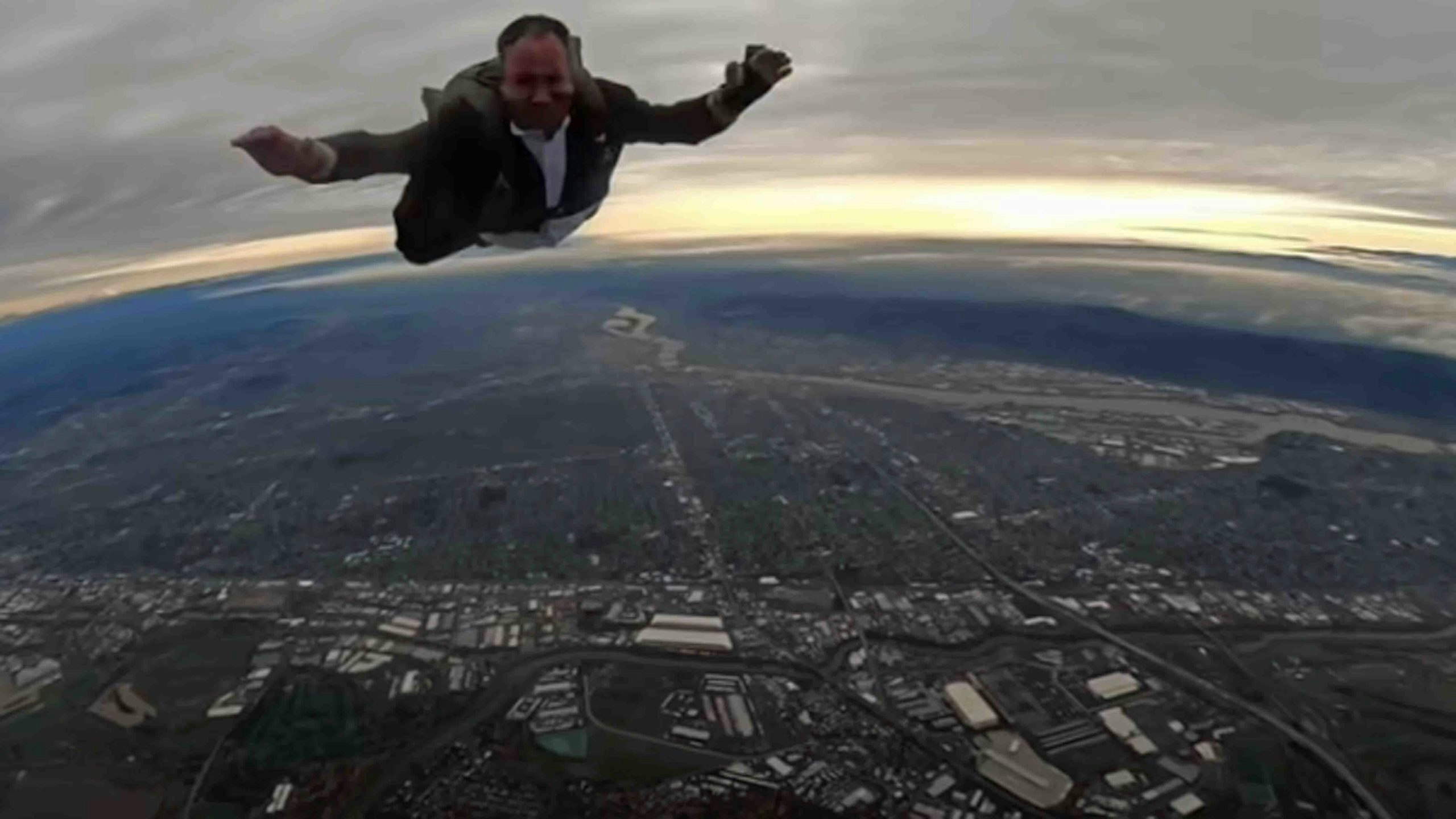In aviation and parachuting circles, D.B. Cooper is a name that comes up often, either as a folk hero or villain for pulling off the only unsolved hijacking in aviation history.
More than 100 books have been written on the subject, and every year, hundreds of people convene in Portland, Oregon, to swap theories about what really happened on Nov. 24, 1971, when a man identified as Dan Cooper hijacked a Boeing 727 and parachuted out of the plane with the $200,000 ransom.
The hijacker’s real identity was never discovered, though the names of many potential suspects have been bandied about for years.
Nor was the money ever found, with the exception of $5,800 in $20 bills with serial numbers matching some of those paid the hijacker that was found on private property along the Columbia River.
Uncovered The Secret
But now, a pilot and skydiver believes he may have uncovered the secret of D.B. Cooper.
Like thousands of others, pilot and skydiver Dan Gryder of the Probable Cause YouTube channel has been conducting his own investigation of the case for the last two decades.
He has conducted his own interviews with the lead FBI agent on the case Ralph Himmelsbach, landowner Al Fazio, who owned the property where the cash was found in 1980, the former owner of the Aerial Store in Aerial, Washington, which served as the staging ground for a nearly four-month search, along with other notable authors and experts on the subject.
He’s also attended the “D.B. Cooper Con” in Portland, which every year attracts hundreds of curious people from around the world.
Replicating The Jump
During this year’s 50th anniversary of the hijacking, Gryder duplicated Cooper’s jump with a rucksack full of cardboard boxes filled with sand to replicate the weight of the bag the hijacker would have jumped with.
The result? He concluded there is no way the hijacker could have held on to the money and safely parachuted from the flying 727.
Gryder also claims to have finally identified the culprit in question.
Who Was He?
In his nearly three-hour video documentary “D.B. Cooper: Deep Family Secrets,” Gryder claims the hijacker was actually Richard Floyd McCoy, Jr., who was arrested six months after the DB Cooper hijacking for a very similar yet botched attempt in Utah.
The FBI knew he was their man, Gryder determined, but because they made errors in the investigation and then lied about it, the agency ultimately declared McCoy had nothing to do with the first hijacking.
Of all the authors and investigators on the original case, Gryder noted that his experience gives him unique insight into the hijacking itself.
As a pilot, flight instructor and seasoned skydiver, Gryder outlines in his documentary why he thinks that the FBI misread the charts and weather in the area where Cooper parachuted out of the airplane.
As a result, agents searched the wrong area nearly 30 miles from where Gryder concluded the hijacker likely landed and they were deluded in writing off McCoy as a copycat, he said.
His conclusions echoed those reached in the book “D.B. Cooper: The Real McCoy,” written former FBI agents Bernie Rhodes and Russell Calame.
Holes In The FBI’s Case
There are several holes in the FBI’s case, Gryder said, beginning with the jump itself and the assumption that there’s no way that the hijacker would have survived the jump, which Gryder said is patently false.
He also questioned Himmelsbach’s recollection that the hijacking and jump occurred on a stormy evening, referencing weather reports that showed it had been a mild evening. McCoy, a former Green Beret who served two tours in Vietnam as a demolition expert and pilot said Cooper would have had no problem landing.
Furthermore, was the FBI said that McCoy was too young to be D.B. Cooper and that, unlike the jijacker, McCoy did not drink or smoke.
Gryder’s documentary pointed out the folly of not expecting Dan Cooper to use a fake identity when booking the ticket, to use a disguise to hide his identity and to throw investigators off by engaging in vices.
Lack of Search Warrant
Other mistakes on the part of law enforcement kept them from pursuing McCoy for the first hijacking, Gryder said. The lack of a search warrant when officers raided McCoy’s home, Gryder said, ultimately kept investigators from pinning the “D.B. Cooper” hijacking on McCoy because they feared the case would be thrown out of court.
The lack of the appropriate warrant, however, did not stop the prosecution of McCoy for the Utah hijacking in 1972. Despite his claims of innocence, McCoy was sentenced to 45 years in prison. McCoy later broke out of prison with three other inmates and was killed by FBI agents in a shootout in 1974 when they tried to apprehend him.
The theory that McCoy was actually D.B. Cooper was also stymied in part, Gryder said, by a lawsuit filed by McCoy’s widow Karen against the authors Rhodes and Calame. Karen McCoy won an injunction to stop the printing of their book because it claimed she had been complicit in the hijackings and contained other potentially libelous information.
The publisher settled, and the book went out of print. During a hearing in the lawsuit, Karen ultimately admitted to helping her husband with the Utah incident, claiming she’d been a victim of severe physical and sexual abuse as a child.
Confessions From Children
Perhaps as his most convincing bit of evidence, Gryder secured confessions from McCoy’s grown children, Richard McCoy III and Chante, who admitted to Gryder that their dad was actually D.B. Cooper.
Chante was 4 years old at the time of her dad’s arrest for the Utah hijacking and said she’d felt guilty for being the one who let the agents into the family’s home to arrest her dad and seize $500,000 in cash and a parachute.
The kids felt compelled to keep the identity of their dad secret until after their mother died in 2020. Because they said she had been complicit in both hijackings, they kept silent to protect her.
They said they felt compelled to identify their father and apologize to America and the people he harmed, claiming he’d committed the crimes out of desperation as a Vietnam vet who was not only the subject of harassment, but was unable to find work when he returned to Utah.
Why now and why confess to Gryder? According to Chante, Gryder had been “dogging” her for years as a “concerned citizen” and she chose finally to return his calls and tell the truth to uncover the secret that has been a permanent shroud over the family for the past five decades. Also paramount in the dismissal of McCoy as a suspect was the alibi from Karen’s sister, Denise, who claimed the couple had been in Utah over that Thanksgiving weekend in 1971.
Denise told Gryder a different story in his documentary, however, claiming the couple had not been home and called her back from college to babysit.
Denise said she recalled them going on a 3- to 4-day trip to California.
Gryder also said that McCoy had been spotted in Vegas over that weekend, though he didn’t cite his source for that in the documentary. He said McCoy had presumably gone there to launder the nearly $10,000 that he had tucked into his clothing prior to jumping.
Other evidence included a confession from the son of McCoy’s dad’s best friend, who said he had overhead McCoy confessing that he was D.B Cooper and wanted that to be known.
20-Year Project
Gryder told Cowboy State Daily that he’s been working on solving this mystery for the past 20 years.
A key for his conclusions, he said, was reenacting the jump this year holding the bag of money.
The bag filled with cardboard boxes full of sand in the weight of the original ransom, was impossible to hold on to, Gryder said. As a result, he believes McCoy made his second hijacking attempt in Utah after learning from his mistakes, prompting him to ask for larger denominations and a sturdier bag with handles.
It was eye-opening, Gryder said, to see how fast he fell through the sky while holding onto the money, reaching speeds of up to 200 mph, far above the maximum speed of 120 mph to safely release a parachute.
Many commenters on his YouTube channel are not surprised that it was Gryder who solved the mystery.
Gryder is well known in aviation circles as a maverick who frequently takes on the National Transportation Safety Board (NTSB) on his channel when he reinvestigates aviation crashes. He said he started his “itty, bitty fledgling” channel in the first place not only because NTSB crash investigations take far too long, he said, but because the agency is often wrong in its conclusions, which has great impact on safety and ensuing regulations.
Polarizing Figure
He’s a polarizing figure given his inclination to call out people and say exactly what he thinks, he admitted, but his channel speaks for itself with growing subscriber base of more than 50,000 in the last year despite his frequent request to visitors not to subscribe. He also does not monetize his channel for the sake of maintaining objectivity.
His candor has earned him equally as many detractors, such as one post on the Pilots of America forum who referred to Gryder as “a treasure trove of anti-authoritarian nonsense and dangerous behavior.” Critics cite a 2009 incident in Georgia in which Gryder allegedly nearly clipped a law enforcement officer’s vehicle with the wing of his DC-3 to avoid being arrested, an act that temporarily cost him his FAA certificate and resulted in his suspension as a pilot for Delta.
Despite past controversy, Gryder has a heart for his cause that compels him to fly all over the country visiting the sites of airplane crashes for the sake of getting safety right, he said, which resonates with his subscribers, most of whom are pilots or aviation buffs themselves.
As for this controversy, Gryder said he has no plans to do any additional interviews and instead will let the documentary speak for itself.



















